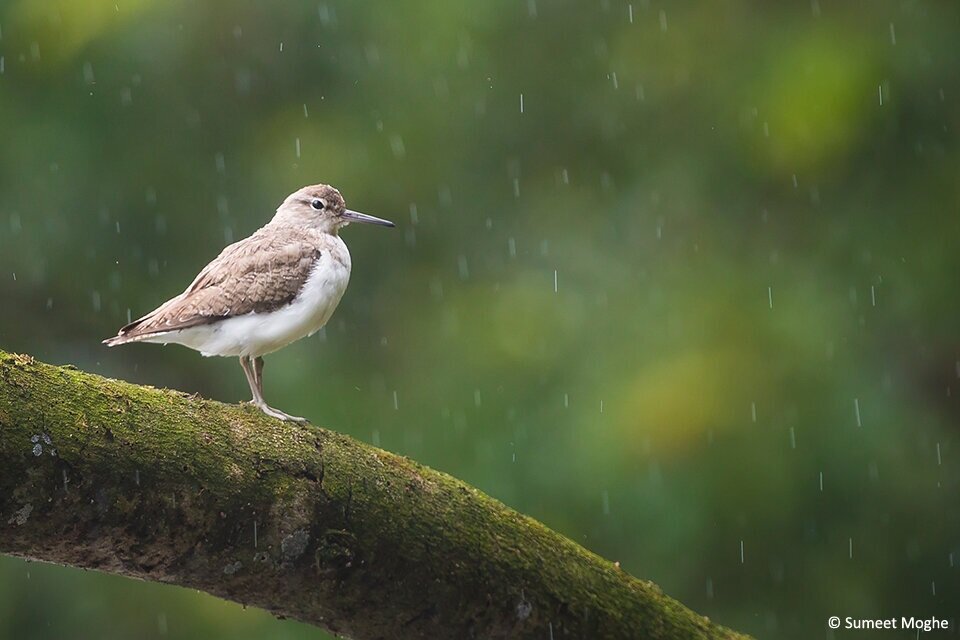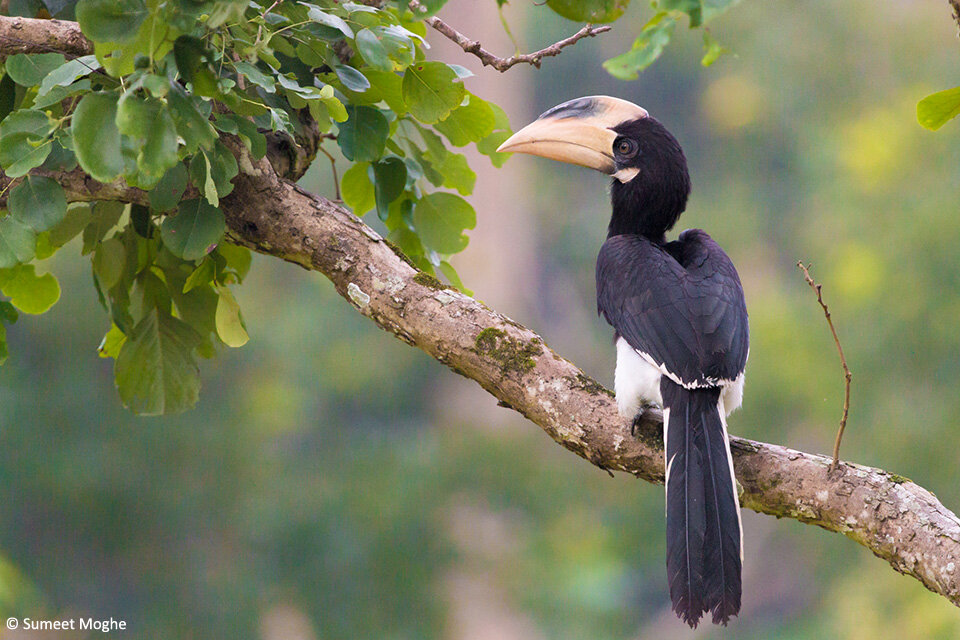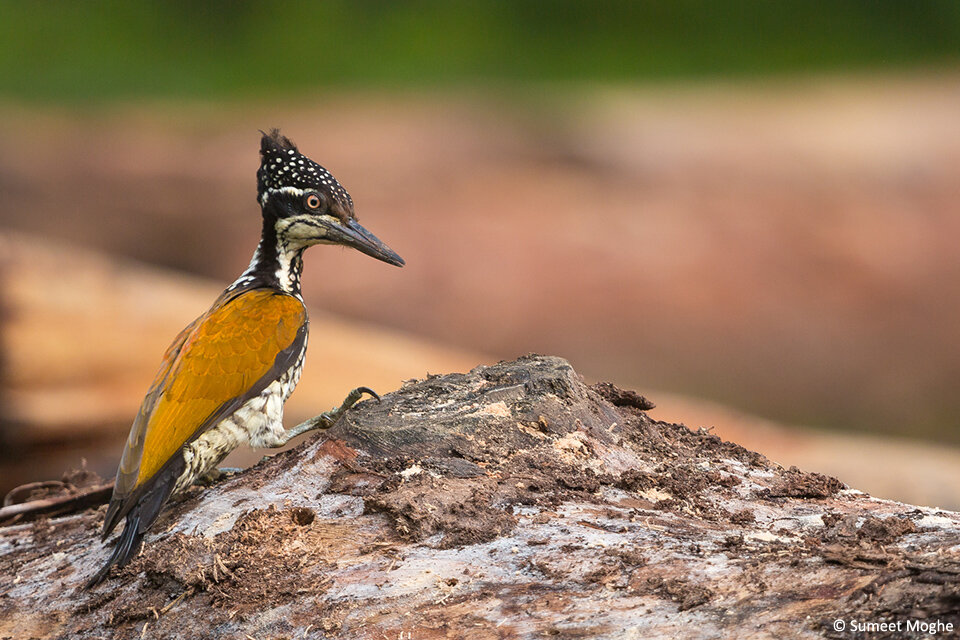Lazing by the River Kali
This is a co-authored post with Manish Vaidya that first appeared on JLR Explore.
“No, I’m not going white water rafting!”. I’d repeated that so many times at work, that I could have instead worn a t-shirt with that as a slogan. It’d been months since I’d taken a break from work and all I wanted wa a relaxing holiday, away from the hubbub of the city; preferably somewhere close to wildlife. I’d almost made up my mind to go alone, when my friend Manish offered to give me company. Now when I say “offered”, I mean the word in the truest sense of the word. Given my reputation of being a constant complaint-machine about luck, sightings and photographs, I actually have to wait for people to “offer” to accompany me. Well this time around, I promised myself to be well behaved, actually relax, and treat a holiday like a holiday.
The camp by the river Kali
So we packed our bags, thumbed our noses at the non-existent monsoon and drove the picturesque four hundred odd kilometres to land at the Kali Adventure Camp at Dandeli. Setting out at the crack of dawn and reaching right around lunch time usually means that you’re absolutely ravenous. As we wolfed down what was a sumptuous lunch with plenty of local fare thrown in, the sense of a relaxed holiday set in. While Manish spent his time quizzing the naturalists Shashi and Arjun about hornbill, tiger and black leopard sightings, I imagined myself snoozing in our tent and watching the river Kali go by during our few waking hours.
Set by a rather calm stretch of the Kali River, the Jungle Lodges camp makes a pretty picture. The tents are too well appointed for what’s essentially a wildlife camp, though that’s not something I’ll complain about. I have to say, that Dandeli’s most well known amongst adventurers for its grade 2 and grade 3 rapids which are ideal for both professional and amateur rafters. No wonder I got asked that often! We were off season though – rafting typically begins in October. Monsoons are the season to take it easy. And take it easy we did.
The tented accommodation is in a beautiful patch of green adjoining the river.
The rather comfortable tent at the camp.
“So sir, how about a safari this evening?”, said Shashi. Manish and I exchanged a few glances. While I’d have preferred to snooze, Manish still seemed to be dreaming of black leopards. “Yeah, we’ll go.”, I said. That evening, our relaxed drive through the thick, deciduous patches of the Dandeli-Anshi Tiger Reserve reminded me all that I’d been missing in the city. The call of a Crested Serpent Eagle broke the calm of the afternoon just as we were admiring the sight of a gracefully perched peacock. For once, it made sense to slow down to admire saddle fungi than to be encumbered by the pressure of chasing alarm calls in the hope of finding a big cat.
The evening ended with the sight of Great Hornbills flying above the canopy, to their nests along the hillside. My body had just about started complaining about the lack of rest, when our vehicle rolled back into the lodge – to a reception of hot tea and pakoras. A guilt inducing dinner followed, and at long last we hit the bed.
Crested Serpent Eagle Spilornis cheela
The Dandeli Timber Yard is one of the best kept secrets of the Western Ghats. We spent our next couple of mornings around the various species of ficus in the area. While the fruits weren’t yet ripe they seemed to attract rather large flocks of Malabar Pied and Malabar Grey hornbills. The real surprise came one morning, when we heard a rather loud flapping of wings characteristic to the largest species of hornbills out there – the Great Pied Hornbill. As a trio of these magnificent birds flew above the tree-tops, we tagged along on foot. Unfortunately for us, they didn’t stay at the yard for long. There wasn’t enough sweet fruit to keep them interested. Prabhakar, our guide reassured us, “In a month or two, they’ll be here all the time.” Hornbills apart, the yard’s usually teeming with bird activity. Woodpeckers, flycatchers, babblers and owlets are all over the place even during the monsoon.




Our biggest discovery during our stay though, was the camp itself. With a healthy resident population of Malabar Pied and Malabar Grey Hornbills, the camp is abuzz with activity throughout the day. As the sun gets harder, flycatchers get active. The bird baths at the property are a great attraction for small birds. Perch yourself quietly atop one of the camp’s machans, and you’ll soon have langurs and Malabar Giant Squirrels for company as they noisily make their way from one tree to another.
A walk around the property often reveals interesting sights under foot – frogs, snakes and geckos are fairly easy to find during the wet season. And when you’re in for a lazy coracle ride, just walk up to Anand the boatman and have him take you for a spin to see some crocodiles. If you’re lucky as we were though, the resident White Bellied Sea Eagle will make a customary appearance. Take a walk outside the property, meet some of the locals; especially the Gawlis. Learn how they still manage to live a rather sustainable, traditional lifestyle. And if you were to be as lazy as I was during my time there, there’s plenty of large hammocks to make yourself amply comfortable.
Oh, I wish I didn’t have to get back to work after that weekend. I wish I could have taken up Shashi on his offer to go see the Lion-tailed Macaques at the other end of the reserve. Or that I could have stayed on till the fruits in the timber yard ripen to the point of inducing a hornbill feeding frenzy. As I stuffed my face with crisp masala dosas straight off the pan, I realised that I’d only scratched the surface of the treasure trove that Dandeli is. Another visit is definitely in order. Maybe we can have Manish find that black leopard after all!
Gawlis are the tribals of the region – they sell milk and farm produce in the Dandeli market, to make their living





